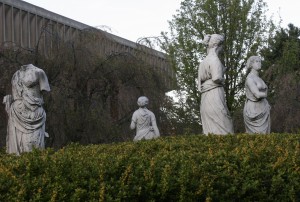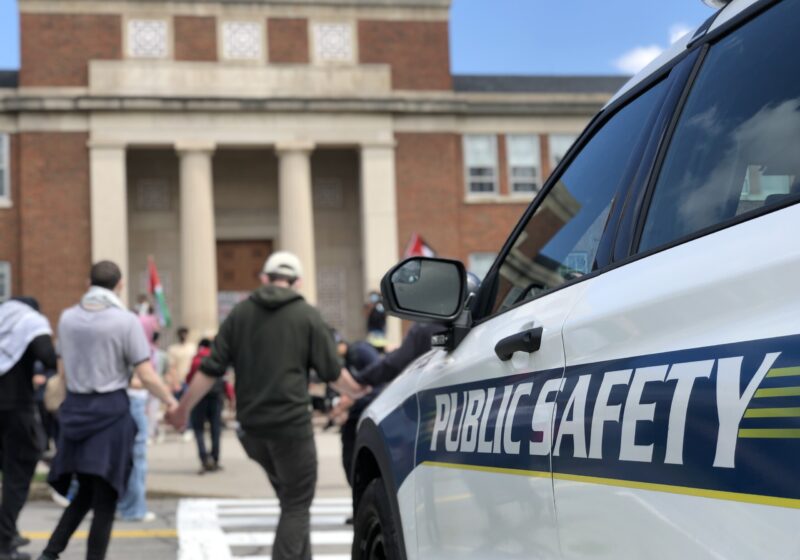
Drue Sokol, Photo Editor
Ever wonder where those statues behind Rush Rhees Library came from? In “Four restored statues unveiled,” published on Oct. 7, 1980, the Campus Times disclosed information about the restoration of those four limbless, marble statues.
Hiram Sibley, the founder of Sibley Hall — a new library then being built on UR’s original Prince Street campus — originally commissioned eight statues of women in 1875 with the intent of “enhancing the beauty” of the building.
Hailing from Coroca, Italy, two of the statues did not complete the journey. The remaining six represented “Astronomy, Geology, Science, Industry, Commerce and Navigation,” as reported in the CT article.
From 1875 until 1955, the statues adorned Sibley Hall, which was unused between 1955 and 1968, at which point it was torn down. Harris Pryor, the former director of the Memorial Art Gallery, “rescued” the statues and stored them with the goal of eventually displaying them again. Initially, Pryor contemplated exhibiting the statues in a Victorian garden at the Memorial Art Gallery.
Enter the UR class of 1954. For its 25th reunion, a segment of that class wanted to make a donation, specifically in the form of a sculpture, to the University. Archie Miller, a professor of fine arts at the time, suggested that the class offer the unused figures, as he had known about their existence for several years.
Miller thought that the sculptures would be an aesthetically pleasing addition to the campus.
They “add a softness to the campus,” he said in the 1980 article. “And maybe a bit of romance.” In fact, the ladies were sculpted with Greek and Roman design in mind, in addition to a Victorian influence.
Miller was a sculptor and worked in Coroca, Italy, where the original sculptures were created. He believed the statues to be “of great professional craft.”
The class of 1954 took Miller’s suggestion to heart and was “very enthusiastic” about the idea. The return of the statues was especially meaningful to this class because its women were the last to graduate from the Women’s College before it merged with the Men’s College later that year.
As reported by the CT, the project cost $18,000 to restore four of the six remaining statues — Astronomy, Geology, Navigation and Industry — to their “original beauty.” The article did not elaborate on the whereabouts of the remaining two.
A combination of the weather the statues endured outside of Sibley Hall, coupled with the soot that had accumulated over the years, prompted the class to clean the statues. They were then coated for protection from further damage that was likely to occur because of the rough weather in Rochester.
Miller arranged the placement of the figures on the lawn, and the set up was “quite interesting,” according to the CT. “Astronomy and Geology stare curiously at the psychology building [now referred to as Meliora Hall], while Navigation is looking completely in the wrong direction and Industry looks toward the learning center [believed to be Bausch & Lomb Hall],” Miller said.
However, while the names of these ladies may strike many as bizarre, there appears to have been a method to the madness. The “names just reflect the ideals of our time,” Miller told the CT. “They were commercial works when commercial symbols were idealized.”
Today, the statues continue to grace the University with their presence and need not be forsaken.
Interestingly enough, Richard O’Brien, the Provost in 1980, remarked that he hoped “[the endeavor would] be the first of many such projects.”
Kerem is a member of the class of 2015.
Scantlen is a member of the class of 2015.

